During spring, an intense aroma of orange blossoms floods Soller Valley. the flower of Orange tree is the protagonist, along with the olive trees, of those terraces on which some Majorcan farmers They seem to belong to another era.
We are in the heart of the Tramontana mountain range , where the peak Puig Major –which with its 1,445 meters above sea level has the honor of being the roof of the island of Mallorca– gives shade to the small and charming towns that try to thrive between the folds of the rugged slopes of the mountain chain that forms the backbone of Mallorca.
One of those towns is Fornalutx.
Fornalutx was the first Balearic town to be part of the select official list of ' The Most Beautiful Towns in Spain' -Today they also feature Pollenca and Alcudia in it–, and when going through its narrow and labyrinthine cobbled streets, which overlook old stone houses, It is not difficult for us to understand the reason for such an achievement.
It is a place charming, quiet, historic, surrounded by a truly inspiring nature and where you can eat very well. A place where disconnect from stress and surrender to a simple and pleasant life.
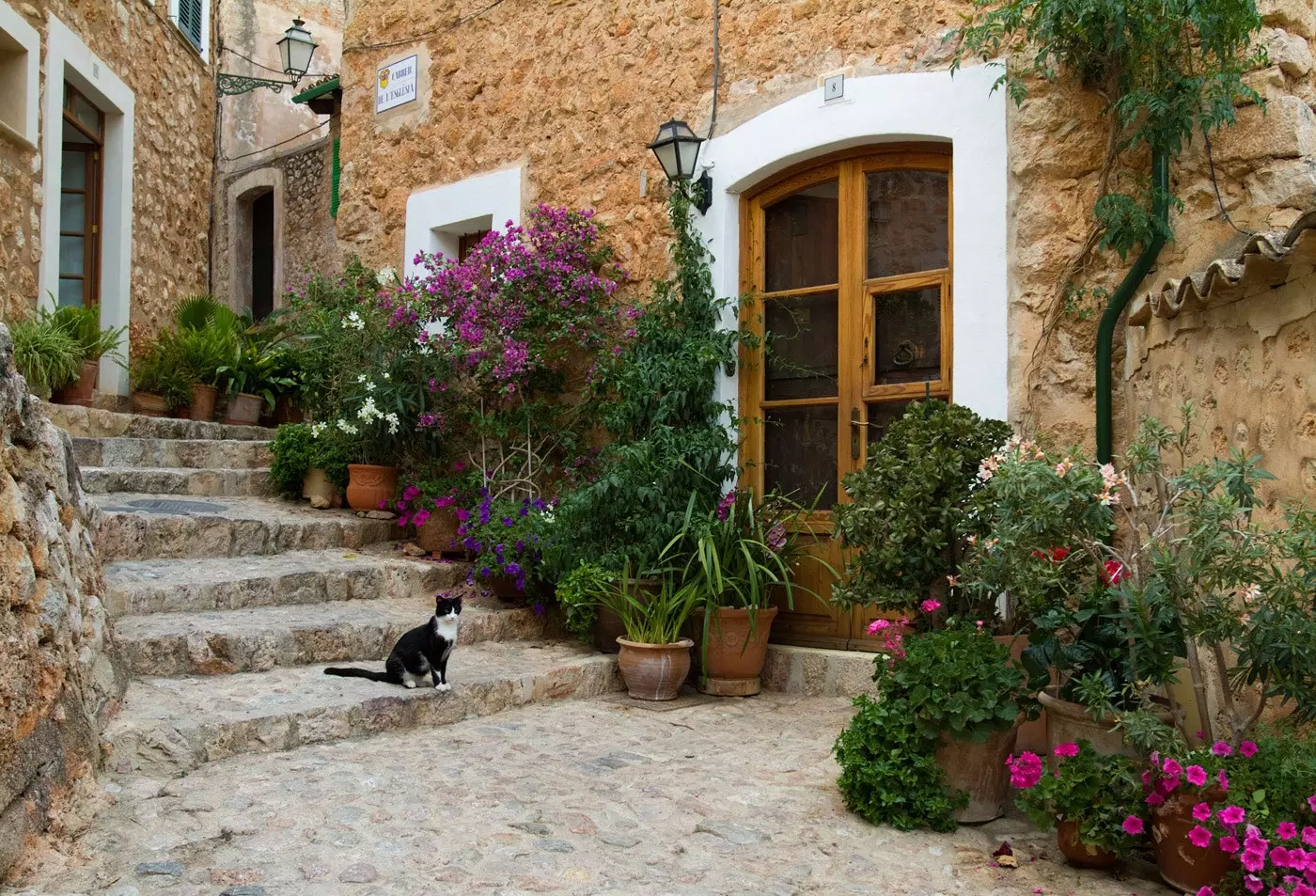
Fornalutx: charming, quiet and historic.
AN ARAB FARMHOUSE
The history of the population of Fornalutx begins a millennium ago, when the arabs occupied the iberian peninsula and some of the Mediterranean islands.
In those days there were a few houses occupied by people who lived from the land in the valley.
The humble farmhouse began to grow after the Reconquest, when Christian settlers settled in some lands that turned out to be prosperous and fertile, at the same time that they were close to the coast and were protected by the mountains.
The passage of time did not change the peace and tranquility of Fornalutx, that after depending on Sóller for centuries, was recognized as an independent municipality in 1837.
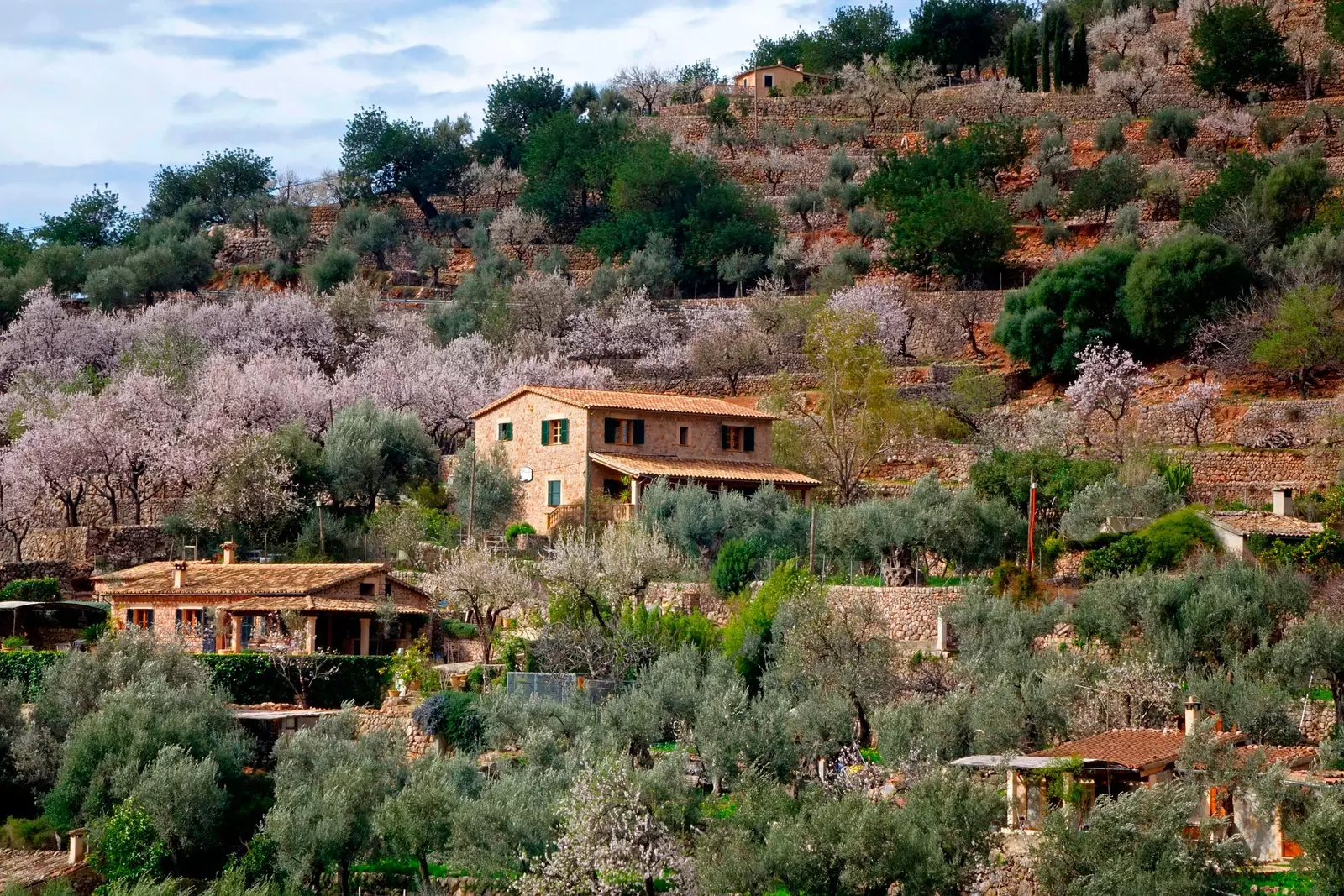
Fornalutx, the jewel of the Tramuntana, Mallorca.
A PEOPLE STOPPED IN TIME
Few differences could be observed A time traveler who visited Fornalutx at different times.
When we walk through its steep alleys dotted with stone steps, we are invaded by the feeling of walking through a medieval town. It helps the church, of gothic origin, who presides the Plaza de España, the nerve center of Fornalutx.
Of the original temple – with a single nave and built between the 13th and 14th centuries – only the portal that gives entrance to the old cemetery. The rest has a certain baroque imprint and its main attraction is the adjoining chapels, which include outstanding works and altarpieces from the 17th and 18th centuries.
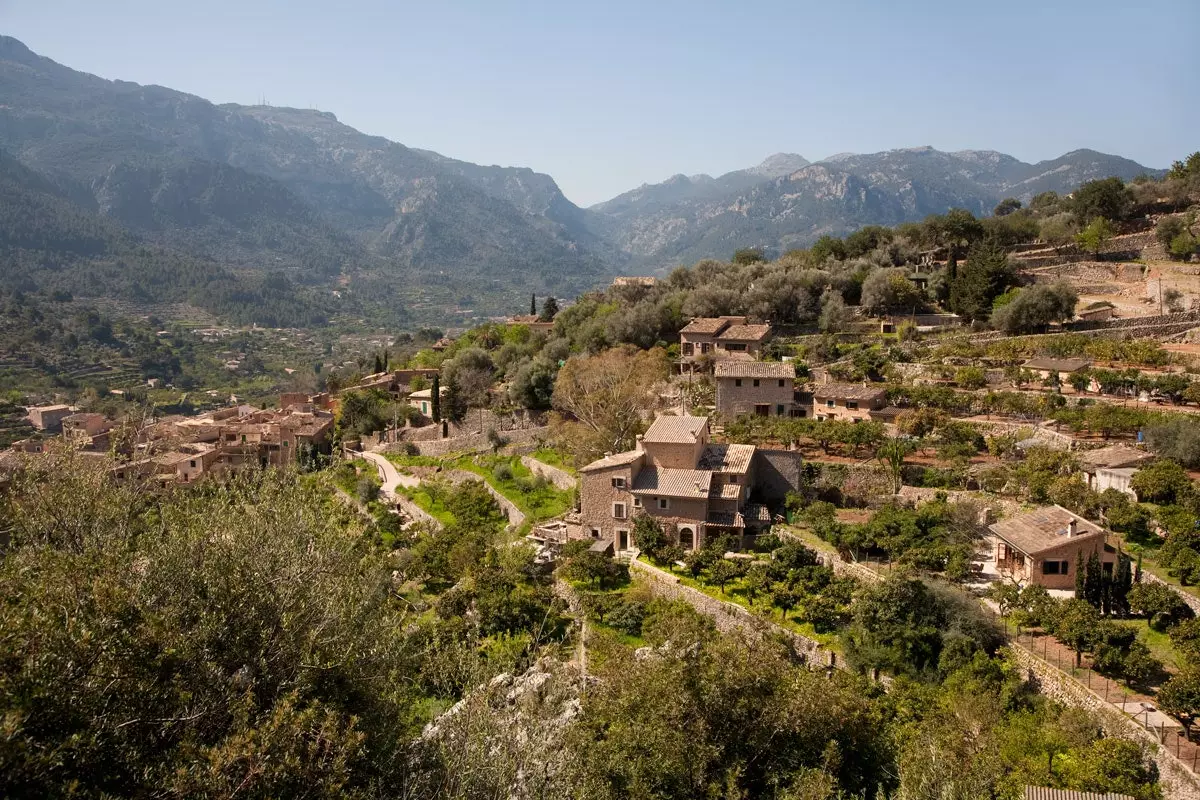
A place frozen in time.
Around her are some of the most picturesque streets of the town. Good examples are the streets of Sant Sebastià, Església or Metge Mayol. The latter leads to Calle Mayor, which takes us to the lower part of Fornalutx, where the City hall appears guarded by an old defense tower from the 17th century.
Next to him the streets of Sa Font and Germans Reynes, which leads us to a small stream which presents its most lustrous appearance in the spring and winter months, when the rains are more abundant in Mallorca.
Those same rains help maintain that garden look that own the streets of the town.
Alongside the stone houses grow large lush plants and in spring the flowers come to life everywhere.
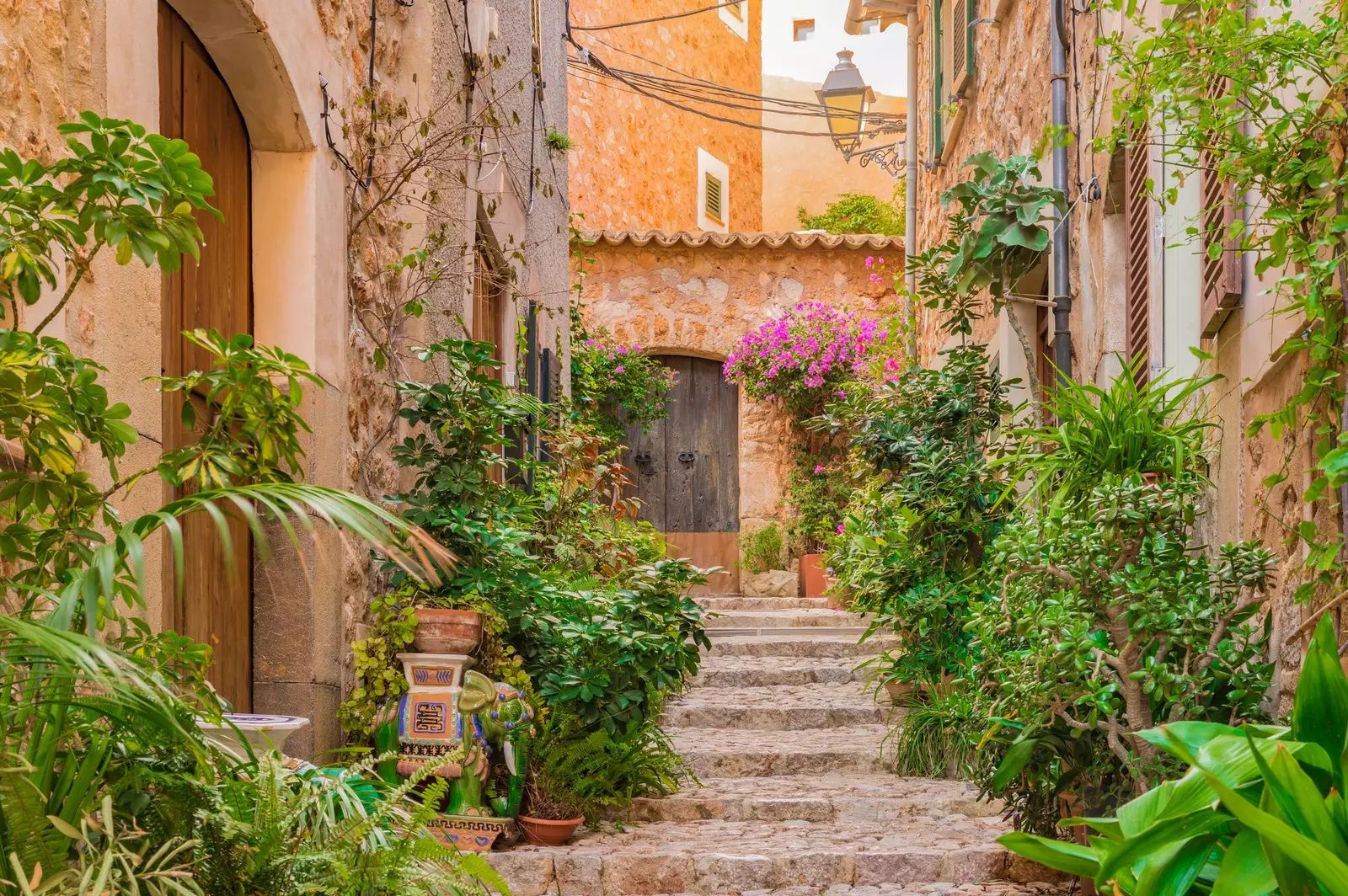
Fornalutx, Majorca.
THE LEGACY OF PAINTED TILES
With such a visual spectacle almost at ground level, it is normal that many of the visitors to Fornalutx do not notice another important attraction found on the heights: the painted tiles.
Artists and scholars from different backgrounds have investigated with curiosity and delivery the painted tiles that appear in the old buildings of Fornalutx and other Majorcan towns, such as Deià or Llucmajor. However, the highest concentration of them appears –by far– in the Sóller valley (populations of Sóller, Biniaraix and Fornalutx).
To see them, we will have to look at the eaves of stone houses. In doing so, we will discover that almost thirty of them show a myriad of painted images.
The drawings of the tiles show people, animals, letters, astral symbols and religious signs. The predominant color is the Red and the reason for its existence has allowed the development of different theories.
On the one hand, there is a decorative Motivation, and on the other, it was considered protection for the house in which they were painted. A superstition that could start around the 12th century in Majorca, but that perhaps he would not reach Fornalutx until late 17th century (the oldest tile that has been discovered there dates from 1691).
There is no better way to discover all the interesting history that surrounds the painted tiles of Fornalutx than by visiting the Can Xoroi Museum , an old industrial mill that has been converted into an ethnographic museum managed by the City Council.
In it there is a collection of 186 tiles, restored and painted, donated by individuals and coming from 22 buildings in the town.
The museum also houses a collection of old photographs taken in Fornalutx and surroundings and various exhibitions and cultural events.
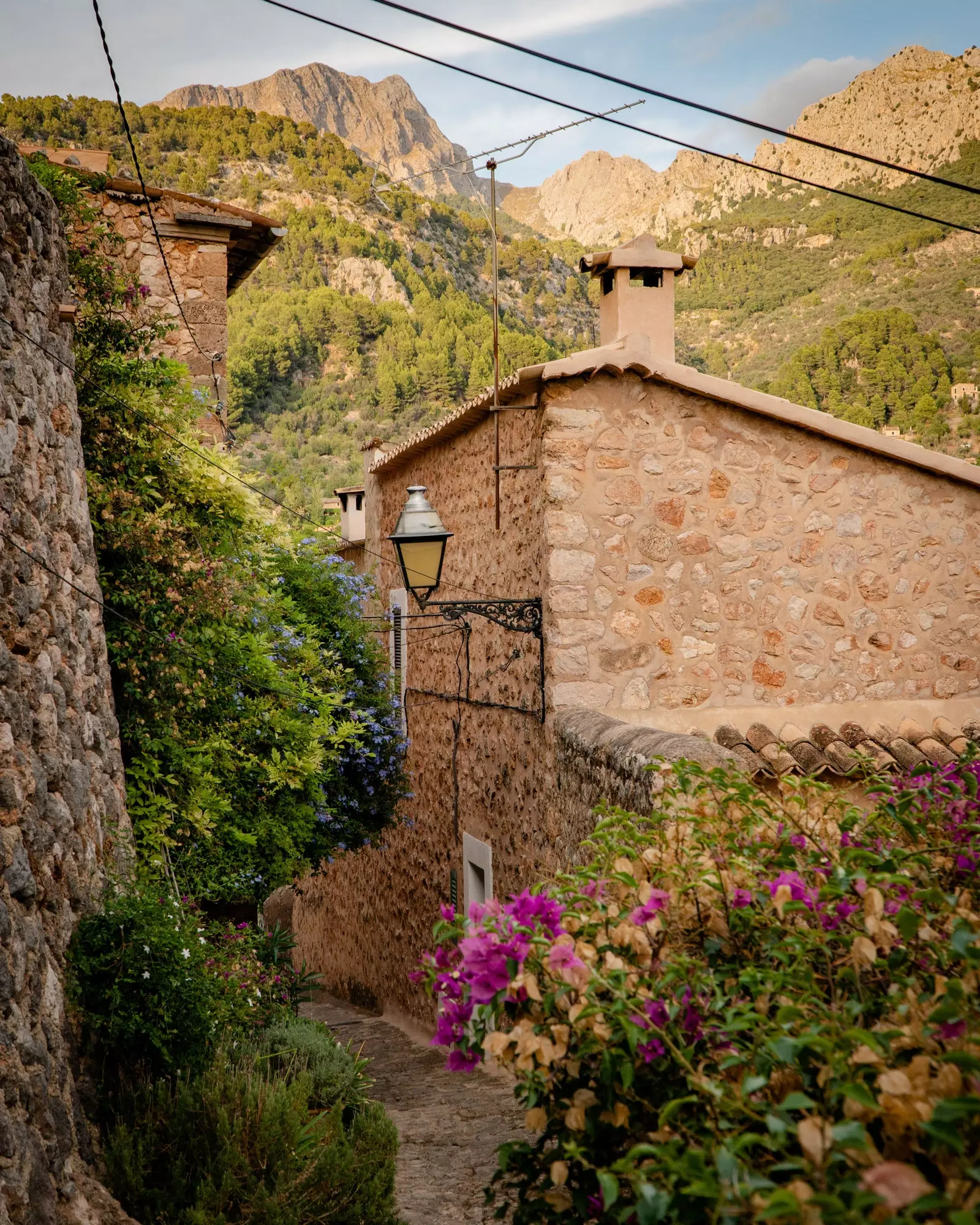
Disconnect in Fornalutx.
HIKING AND GASTRONOMY IN FORNALUTX
Those surroundings of Fornalutx invite to be traveled without haste, with good hiking shoes and enjoying the landscapes to the fullest.
The most popular hiking route is the circular that runs through the towns of Soller, Binibassi, Biniaraix and Fornalutx.
Being circular, you can start from any of these towns, having a total length of just under 8km and being suitable for anyone who wants to give a pleasant walk.
The best time of the year to visit it is spring , when the fields we traverse teem with life and shades of green, blue and ocher are more intense.
For those looking for somewhat more demanding walks, the nearby Biniaraix ravine is an ideal alternative.
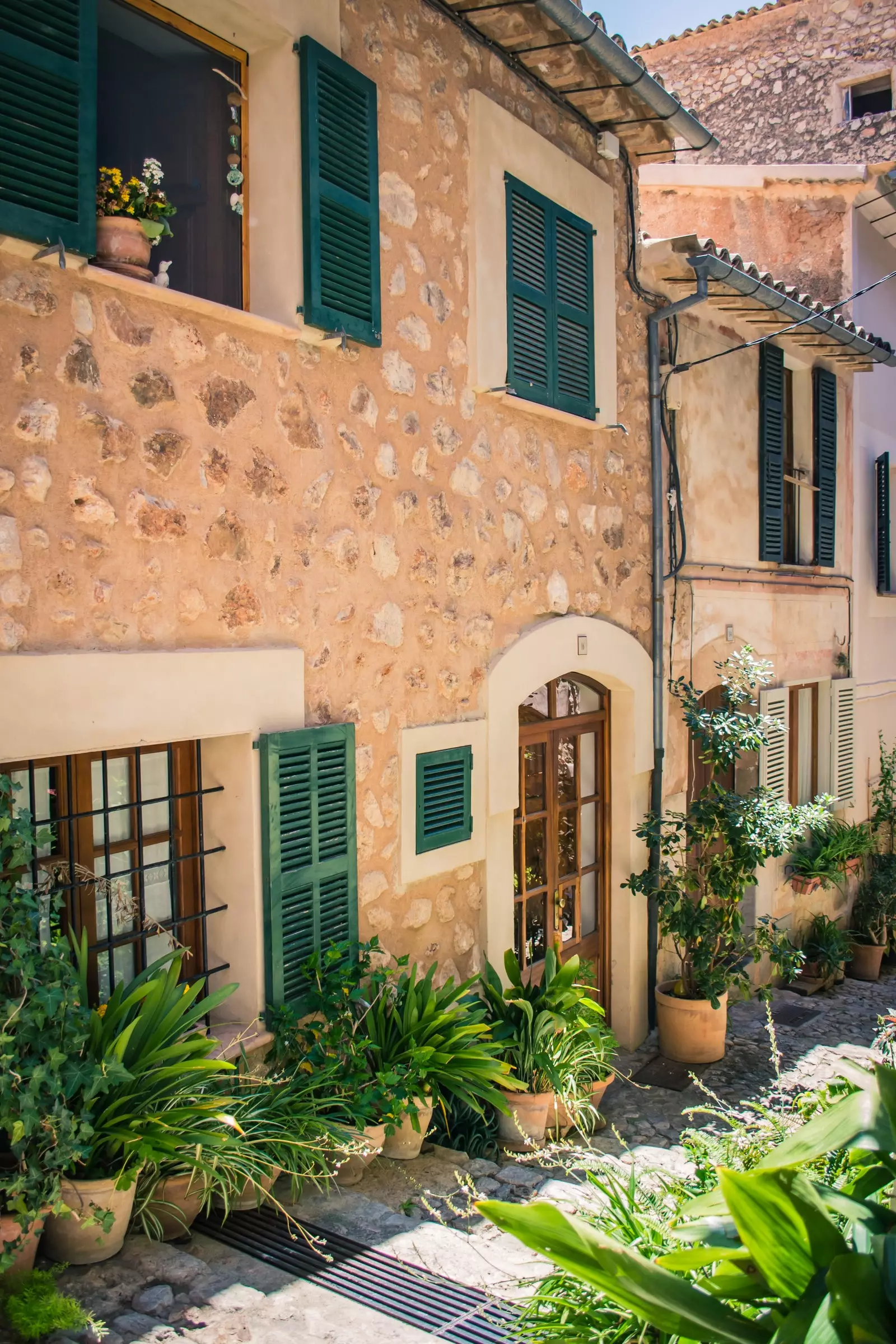
A treasure in the heart of the Tramuntana.
Regardless of which one we opt for, the well-deserved award for the hiker is available on the tables of the restaurant Can Antuna (or Ca n'Antuna), one of the best in Fornalutx and in which the pig is cooked slowly and the raw rice – typical Mallorcan rice in broth – revitalizes anyone. In addition, its terrace offers magnificent views over the town and the surroundings.
Another very good gastronomic option in Fornalutx is It's Turo, a rustic restaurant in which the star is the traditional Majorcan cuisine, but it closes its doors during the low season.
A low season in which, if we visit the town, we will have the sensation of that the stone speaks to us and tells us the secrets of its ancient existence.
